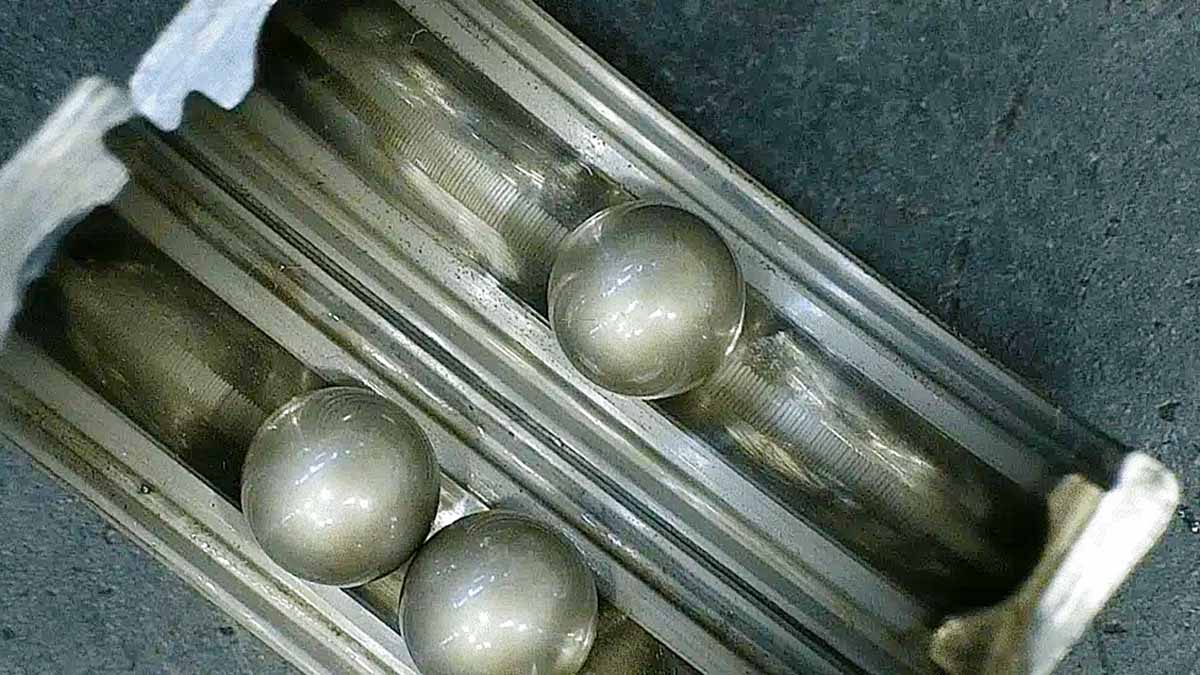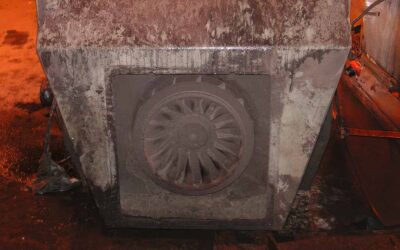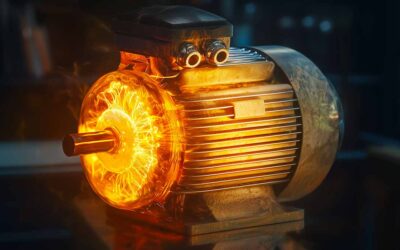Bearing fluting is a specific type of damage characterized by periodic, circumferential grooves formed on the raceway of a rolling element bearing. This damage results from repetitive electrical discharges that break down the lubricant film, allowing current to arc across the rolling elements and raceway.
The localized heating and material removal caused by these discharges creates a series of pits, which align into distinct patterns due to the rotation of the bearing and the consistent electrical excitation.
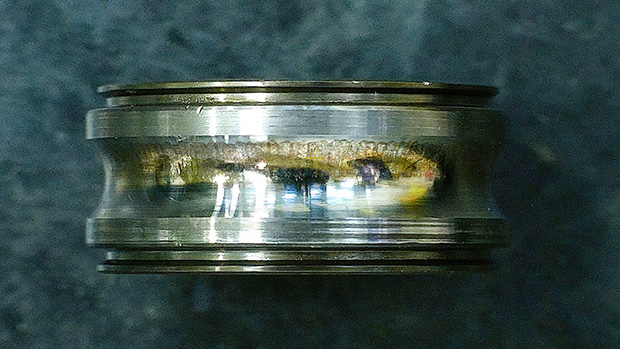
Intuitive Analogy: The “Vibrating Drum Effect”
Imagine a smooth drumhead that gets repeatedly tapped in a specific pattern by small sparks of electricity. Over time, these tiny taps create consistent grooves or patterns on the drumhead. Bearing fluting is like this: it’s the formation of patterned grooves in the raceway (the smooth track where the rolling elements, like balls or rollers, move) of a bearing caused by electrical discharges.
Technical Explanation of Bearing Fluting
The Cause: Electrical Discharges
Bearings are sometimes subjected to stray electrical currents. This commonly happens in electric motors or generators where voltages build up between the rotor and the stator. When this voltage exceeds the insulating capacity of the lubricant in the bearing, it discharges through the bearing itself.
- Voltage Build-Up: Electrical potential builds due to capacitive coupling between the motor windings and the rotor.
- Lubricant Breakdown: Lubricants are designed to act as insulators, but when the voltage exceeds their insulating threshold, they fail momentarily, allowing a spark to jump through the bearing.
These discharges are known as electric discharge machining (EDM) events.
The Effect: Melting and Pitting
When the electrical current discharges through the bearing, it creates high heat at the contact points between the rolling elements and the raceway. This can cause:
- Microscopic Melting: Small spots of metal on the surface melt and re-solidify irregularly.
- Pitting: Tiny craters form where the intense heat of the electrical discharge has eroded material.
Why Fluting Patterns Form
Over time, as the bearing rotates, these individual pits align into a pattern because the discharges tend to happen in specific locations under certain operating conditions. This pattern is called fluting, and it looks like ripples or wave-like grooves on the bearing’s raceway.
Consequences of Bearing Fluting
- Vibration and Noise: The fluted surface disrupts the smooth motion of the rolling elements, causing vibration and noise.
- Increased Wear: The uneven surfaces accelerate wear and tear on the bearing, reducing its lifespan.
- Failure: If not addressed, fluting can lead to catastrophic bearing failure, potentially damaging the machinery.
Preventing Bearing Fluting
Several measures can be taken to prevent bearing fluting:
- Proper Grounding: Ensure the motor or generator shaft is adequately grounded to prevent stray currents.
- Insulated Bearings: Use bearings with insulating coatings or ceramic components to block electrical discharge paths.
- Shaft Grounding Devices: Install devices like shaft grounding rings to redirect stray currents safely to the ground.
- High-Quality Lubricants: Use lubricants with better-insulating properties to resist breakdown.
- Regular Monitoring: Conduct vibration analysis or ultrasonic inspections to detect early signs of damage.
Bearing Fluting Case Study
Understanding the Challenge: Electric Current Damage in Servomotor Bearings
Electric current damage in bearings, particularly servomotors, is a persistent and often overlooked issue. Once this type of damage begins, it can lead to excessive vibrations, increased heat and noise, degraded lubrication, and significantly reduced bearing lifespan—sometimes causing failure within a month, even in new motors.
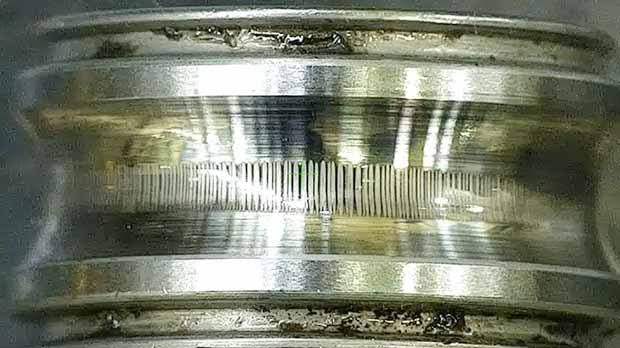
Servomotors, commonly used in precise applications, often include encoders to ensure positional accuracy. However, when bearing damage disrupts the system, the encoder’s ability to maintain position can fail, resulting in costly downtime.
Root Cause: Variable Frequency Drives and Bearing Currents
A significant contributor to bearing fluting is using variable frequency drives (VFDs), which rely on pulse-width modulation (PWM) to simulate sinusoidal AC waveforms.
The high-frequency switching of insulated gate bipolar transistors (IGBTs) in VFDs creates imbalanced voltage, known as common mode voltage (CMV). This imbalance induces high-frequency currents, which flow through the motor bearings as they seek a path to ground.
Usually, the lubrication in bearings acts as an insulator. Still, the rapid voltage changes (dV/dt) caused by PWM can exceed the breakdown voltage of the lubricant, leading to capacitive discharge currents. These discharges damage the bearing surfaces, forming pits that align into fluting patterns over time.
Case in Point: Diagnosing and Preventing Bearing Fluting in a Servomotor
At a repair shop, technicians encountered an Elau servomotor from a customer who had failed just three months after a previous repair. By leveraging an IoT-enabled diagnostics system, they detected harmonic vibrations and significant noise in the motor’s bearings even before disassembly.
Upon inspection, the technicians found the characteristic marks of electrical current damage—evidence of fluting. They collaborated with the customer to address the issue and recommended installing hybrid ball bearings. These bearings use ceramic rolling elements instead of steel, providing excellent insulation against electric currents due to silicon nitride’s high resistivity.
Photos and case study courtesy Servo Motors Adjust.

